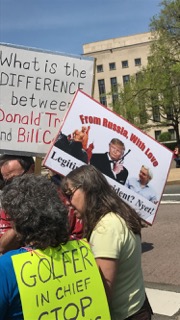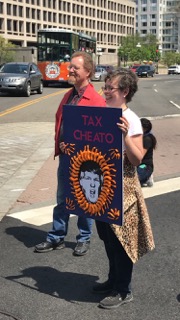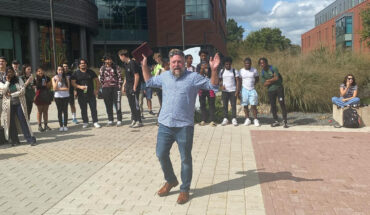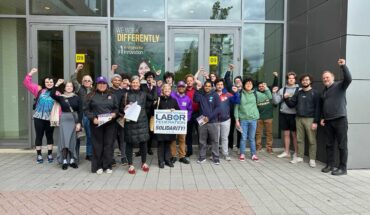Tax March marchers called for Donald Trump to release tax returns.
BY ALEX SHEDD
On April 15, known as “tax day” because the deadline to file federal taxes typically falls on that day, tens of thousands of protesters turned out in Washington, D.C., and across the country for a massive march, the likes of which have not been seen since the Women’s March in January.
The protest aimed to prompt President Trump to release his personal tax history — a call that has continued since his presidential campaign and that he and his administration have continually rejected.
And so, on April 15, protesters in Washington and other communities across the country, including a community near the Florida estate where the president was staying for the weekend, participated in a demonstration.
The main event in Washington began with speakers on the steps of the Capitol, including political and religious leaders such as Maryland Rep. Jamie Raskin (D-8th), Sen. Ron Wyden (D-OR), Bishop Dwayne Royster and Rabbi Nehama Benmosche, and ended with a rally on the National Mall near the Lincoln Memorial.
As the protesters in Washington marched from the Capitol to the Lincoln Memorial amid rallying chants of “get up, get down, we show our taxes in this town,” and “hey hey, ho ho, Donald Trump has got to go,” among others, the president himself took to Twitter to claim that the nationwide protests were “small, organized rallies” that had been paid for by a benefactor.
Additionally, Trump publicly expressed his disagreement with the need for protest, claiming that his electoral win in November canceled out the need to release his tax returns. One protester, D.C. native C.J. Ingram, expressed her anger at the president, saying, “I’m really mad because he made Barack Obama produce his birth certificate, and he’s not even producing his tax returns. What is he hiding?”
Trump’s tweets did not stop more than 100,000 people from making their voices heard. Although the march was peaceful in nearly every city where the march took place, including the main march in Washington, one protest did end in violence.
The proceedings quickly became tense in the University of California, Berkeley campus, near San Francisco, as the protests conflicted with “Patriots Day,” a free speech rally on the campus, in which Trump supporters openly showed their distaste for the protests. An organized anti-fascist group dressed in black and carrying large flags and wooden poles came to combat the Trump supporters, and the event quickly got out of hand.
The Mercury News, a daily paper in San Jose, California, reported that hundreds of protesters and Trump supporters alike rioted on the campus, throwing projectiles ranging from stones to explosives to tear gas at each other as police pepper-sprayed and arrested many. Student protesters, anti-fascists and rioters all clashed at the peaceful-turned-violent event. Some pro-Trump supporters were witnessed saluting the president with a gesture reminiscent of the Nazi “heil.”
Although the Berkeley protests became violent, there were no fatalities. The marches around the rest of the country reported no violent opposition. The mood at the D.C. rally was light, fun and confident. Signs sported tongue-in-cheek jokes about President Trump’s golfing habits, billionaire background and potential ties to Russia.
Beach balls were tossed around as chants went on continually, including repeated calls of “shame” as the protesters passed Trump Hotel. Inflated chickens bearing the president’s likeness were paraded on the street. Some protesters carried signs that sported images of Trump as the famed “monopoly man.”






